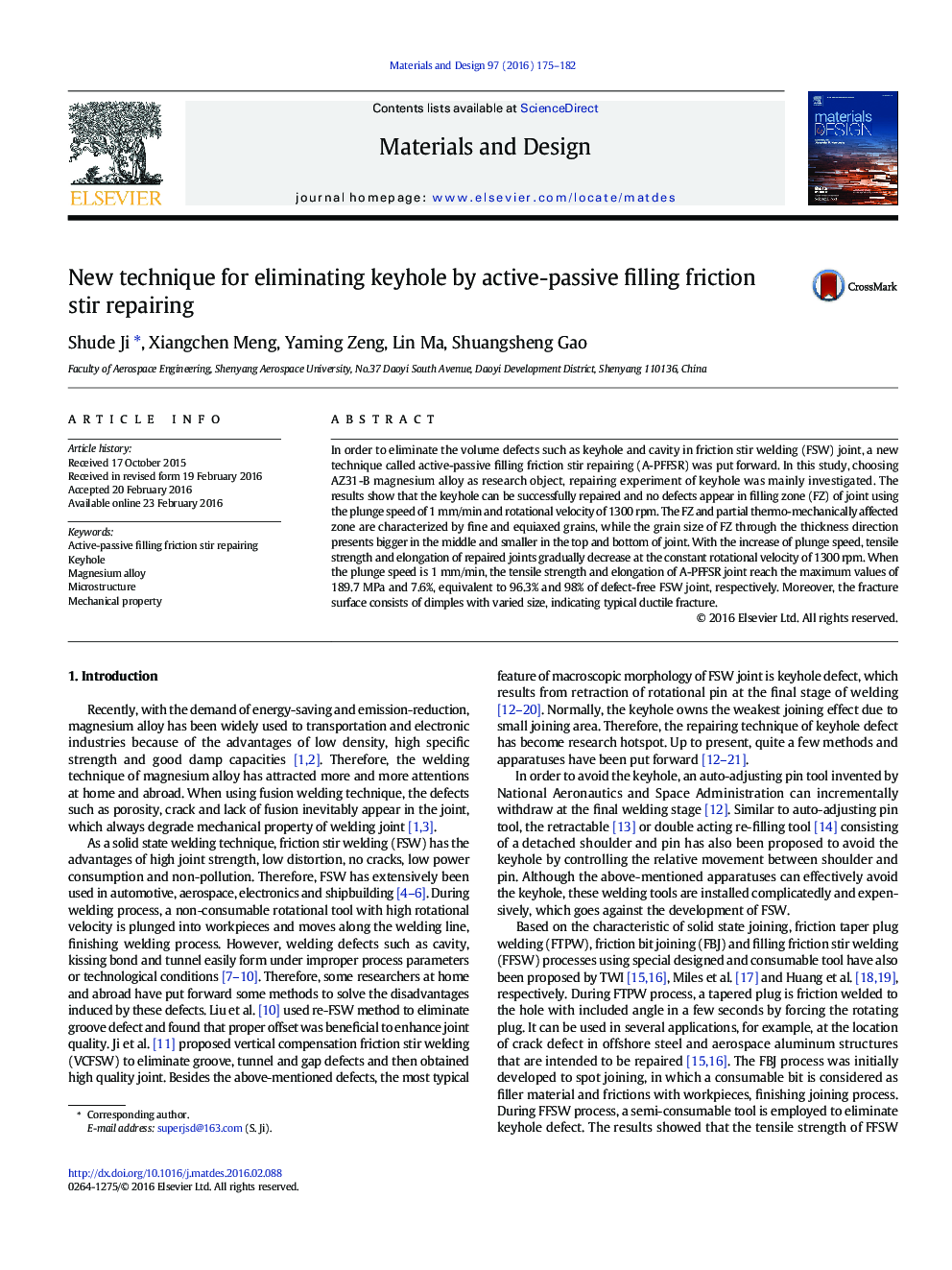| کد مقاله | کد نشریه | سال انتشار | مقاله انگلیسی | نسخه تمام متن |
|---|---|---|---|---|
| 828066 | 1470285 | 2016 | 8 صفحه PDF | دانلود رایگان |
• Active-passive filling friction stir repairing is applied to solve volume defect.
• The keyhole of FSW joint of magnesium alloy was successfully repaired.
• Decreasing plunge speed increases mechanical property of repaired joint.
• Higher heat input is necessary to obtain high quality joint.
In order to eliminate the volume defects such as keyhole and cavity in friction stir welding (FSW) joint, a new technique called active-passive filling friction stir repairing (A-PFFSR) was put forward. In this study, choosing AZ31-B magnesium alloy as research object, repairing experiment of keyhole was mainly investigated. The results show that the keyhole can be successfully repaired and no defects appear in filling zone (FZ) of joint using the plunge speed of 1 mm/min and rotational velocity of 1300 rpm. The FZ and partial thermo-mechanically affected zone are characterized by fine and equiaxed grains, while the grain size of FZ through the thickness direction presents bigger in the middle and smaller in the top and bottom of joint. With the increase of plunge speed, tensile strength and elongation of repaired joints gradually decrease at the constant rotational velocity of 1300 rpm. When the plunge speed is 1 mm/min, the tensile strength and elongation of A-PFFSR joint reach the maximum values of 189.7 MPa and 7.6%, equivalent to 96.3% and 98% of defect-free FSW joint, respectively. Moreover, the fracture surface consists of dimples with varied size, indicating typical ductile fracture.
Figure optionsDownload as PowerPoint slide
Journal: Materials & Design - Volume 97, 5 May 2016, Pages 175–182
